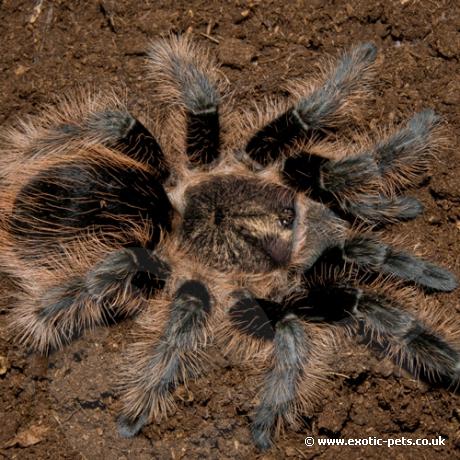

The Curly Hair Tarantula is ideal for the novice keeper. Easily available, cheap and easy to care for makes them a great chose for a beginner.
| Origin | Honduras, Nicaragua |
|---|---|
| Lifestyle | Terrestrial |
| Temperature | 24-28�C |
| Humidity | Moderate |
| Adult Size | 15cm |
| Temperament | Docile |
While immature, this species has an overall brown colour, with a copper tint on the carapace. Mature Adults still have the copper on the carapore, but have a brown-black ground with golden-red hairs on the legs and abdomen. An average adult size is 3 inch body and up to a 4.5-5.5 inch leg span.
Personally, I prefer the Curly Hair Tarantula to the Chile Rose Tarantula. The Adult colour is pretty and I have found this species to be very calm and easy to handle. I basically just pick them up and pop them in my hand, they never seem to struggle. Caution should always be taken, as each tarantula has a different temperament.
Found in wet forests of Guatemala to Costa Rica.
Due to this species living in wet forests, they need to be provided with a reasonably humid living area of 70-80%. The temperature ranges from 21 - 27C (70 - 80F), just above room temperature will be fine for them.
YES - This is one of the easiest and best species of tarantula to keep.
Being a Terrestrial species (ground living), you need to provide the Tarantula with more ground space than height. They will dig if given the opportunity or hide beneath logs, I find they prefer the latter. Layer the bottom of the tank with approx. 3" (80mm) of substrate to allow burrowing. Provide rocks, logs and even a plant pot for the Curly Hair to hide under.
Once a week, feed on a range of insects and depending on the age, the odd pinkie (baby mouse). Crickets can injury your tarantula during moulting, so any uneaten food should be removed if your tarantula doesn't seem interested, try feeding again a few days later. Always provide water, this can be via a shallow dish or Tarantula sponge!